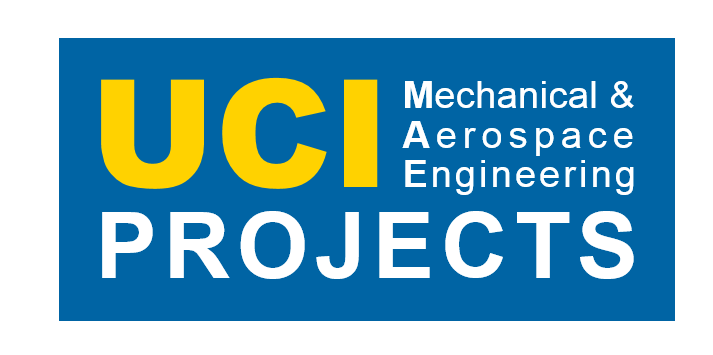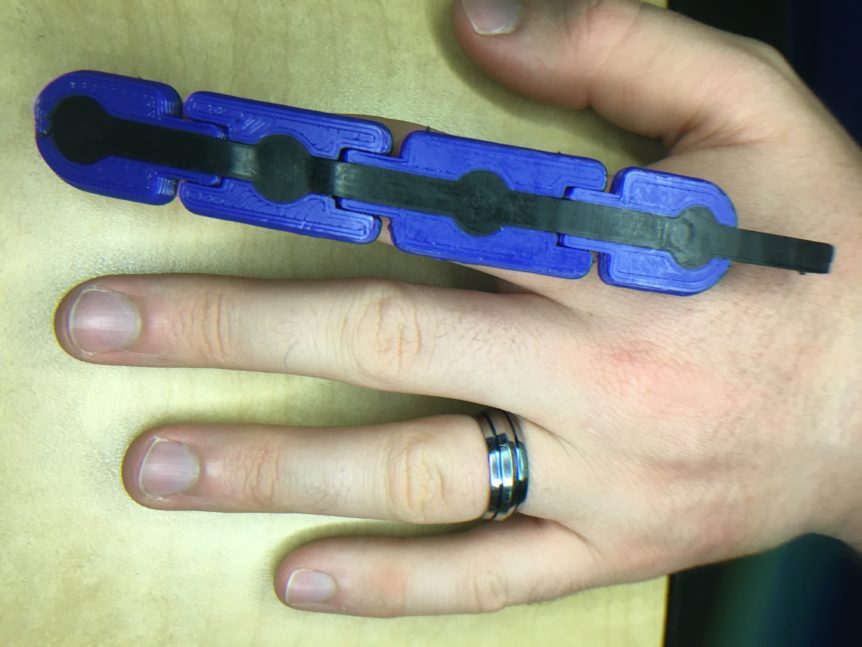We’re proud to showcase what we’ve been able to achieve thus far using our designs and dual material 3D printing with regard to our finger prototype for the Krobohand. Using a combination of Inova-1800 (Co-polyester filament) and Ninjaflex (Thermoplastic Elastomer filament), we’ve been able to successfully integrate a stabilizing, as well as restoring force tendon within the body of the finger. We printed the inner side of the finger using the same TPE filament as we did with the tendon, which we believe will help with gripping later on down the design process.
Shown in our picture is the most recently made prototype of the finger, overlaying our Team Manager, Ethan Kirkley’s left index finger, showing how it would line up with a human hand. The fourth segment that is within the palm segment of Ethan’s hand is currently being redesigned to accommodate lateral movement for the finger in the prosthesis. This is an especially challenging part, as we are looking for this segment to be easily attached, as well as removed from the prosthesis. This way, if a finger were to break while in use by an amputee, the amputee would have the ability to replace the broken finger, without having to buy an entirely new prosthesis, thus cutting down the cost for the amputee.
Though we haven’t had extensive testing done on the printed flexible tendon within the finger, we have completely closed the finger, and let the tendon return it to a resting state at least 200 times, and have seen no change in the properties of the material. We will need much more tests done than this, but we think this a good sign thus far.
Further, comparing our prior prototypes that don’t have the TPE inner side of the finger printed on them, to this current prototype with the TPE, we’ve found this finger to be able to grip objects much easier, such as pencils or tools.
We will be, however, redesigning the channel in which the cable attached to the linear actuator to pull the finger closed will be routed. Through the body, the channel is working as designed, but the front segment of the finger, where the cable needs to attach itself to the finger, needs to be refined so as to make it simpler to attach. This will likely be redesigned by our next blog update.
These are the major updates for our finger design for the Krobohand, and we plan on doing extensive testing with our linear actuator soon.
-Krobohand Group

